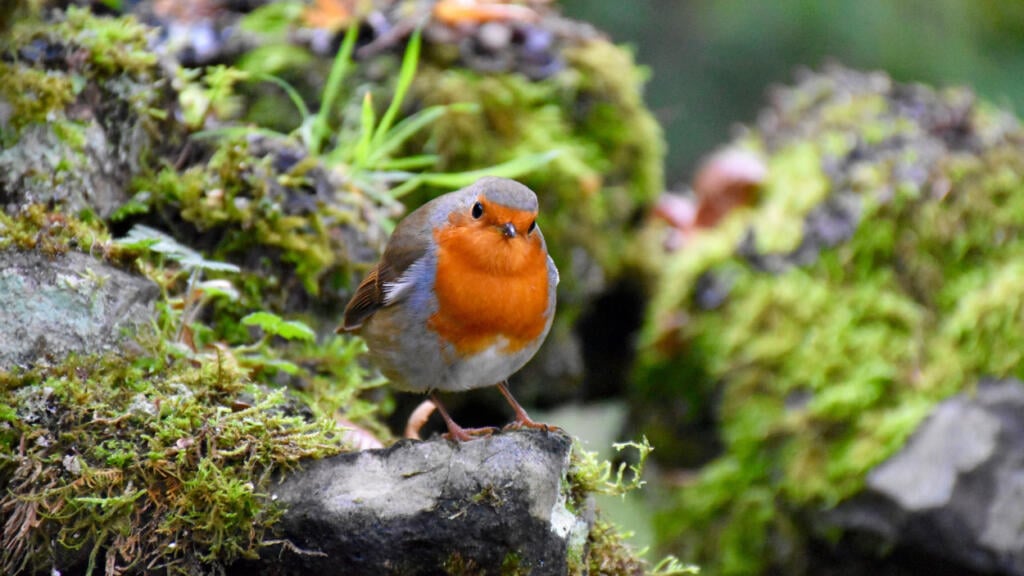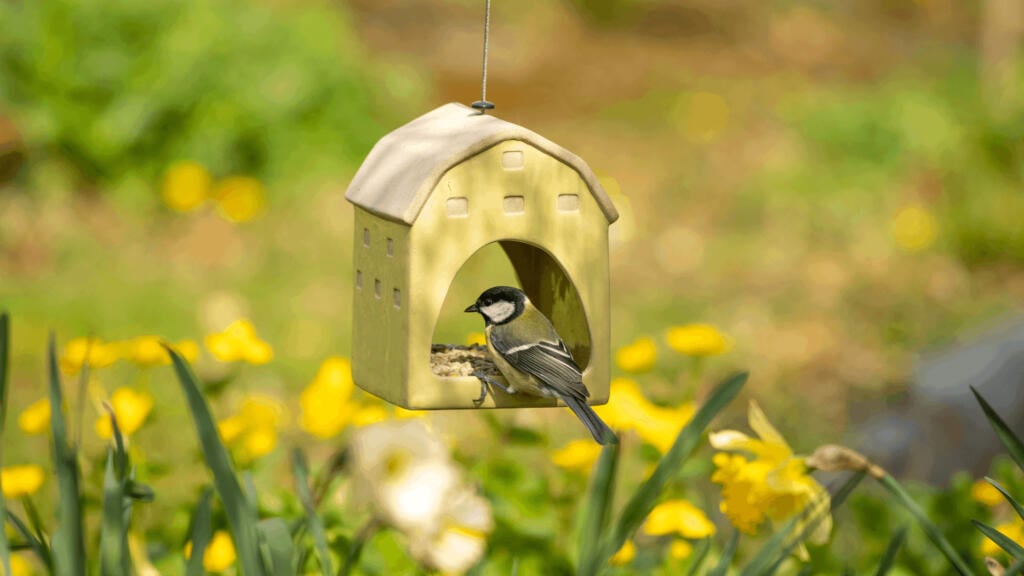
10 breathtaking photos from gardens around the world
Rosanna Spence
Discover inspiring Japanese garden ideas for planning, planting and hard landscaping.
Japanese garden ideas are back on the design agenda, thanks mainly to high-profile examples at 2023’s RHS shows. Each of them took inspiration from ancient Oriental landscapes and reimagined them in small and low-maintenance garden spaces. From the ‘Biophilic Garden Otsu – Hanare‘ at London’s Chelsea Flower Show, to the Lunar Garden at Hampton Court Palace.
But here’s another reason that everyone is talking about Japanese garden design. It’s rooted in the symbolism of connecting nature with spirituality. As landscape and garden designer Andy Sturgeon says: “Japanese gardens have also always been considered to have the power to promote a healthy, spiritual life, something we’ve only recently grasped in the West.”
Japanese garden ideas are back on the design agenda, thanks mainly to high-profile examples at 2023’s RHS shows. Each of them took inspiration from ancient Oriental landscapes and reimagined them in small and low-maintenance garden spaces. From the ‘Biophilic Garden Otsu – Hanare‘ at London’s Chelsea Flower Show, to the Lunar Garden at Hampton Court Palace.
But here’s another reason that everyone is talking about Japanese garden design. It’s rooted in the symbolism of connecting nature with spirituality. As landscape and garden designer Andy Sturgeon says: “Japanese gardens have also always been considered to have the power to promote a healthy, spiritual life, something we’ve only recently grasped in the West.”
 Credit: Roberto Silva
Credit: Roberto SilvaHere are 10 Japanese garden ideas that are low on maintenance and high on life, beauty, and the natural world.

To avoid a kitsch remake that looks completely out of place, you have to truly understand the ethos of Japanese garden design to recreate the look here in the West. It’s worth visiting a garden, such as The Japanese Garden At Cowden. This will help you to understand how this style can exist effortlessly in the British landscape.
Landscape architect and garden designer Marian Boswall says: “Japanese Zen garden design principles include, simplicity (kanso), naturalness (shinzen), subtlety (yugen), magic (datsuzoku) and stillness (seijaku).” Each is complex in mysticism and meaning.
There are three main elements to consider when planning a Japanese-style space: stone, to echo the structure of the landscape; water, to symbolise the rhythm and force of life; and planting, to provide naturalistic colour that changes seasonally. Include these three elements and you are well on your way to an authentic interpretation.

In Japan, an ‘hanare’ is a small hut or room separated from the main house where you can be peaceful and carry out simple pastimes. In the UK this simply translates as a room or hut with views into the garden, similar to a summer house.
At RHS Chelsea Flower Show 2023, designer Kazuyuki Ishihara created a neat wooden dwelling with a direct connection with nature. Ensure light spills into the space through lattice screens and windows positioned so you can enjoy the best of the garden.
Think about portrait-shaped windows that frame the view from the inside to the outside. These will create a living picture through the seasons. A flat green roof covered in sedums (fleshy-leaved succulents) ranging from greens to reds adds another low-maintenance element.

Water is a vital part of a Japanese garden and represents a life-giving force. Both moving and still water are part of this principle, echoing the way water moves in nature and the sound that it conjures. To evoke the Japanese mountainside, create waterfalls and trickling streams that pool into still and quiet ponds. The water also reflects the sky, the landscape and the surrounding plants.
Designer Queenie Chan’s Lunar Garden at the RHS Hampton Court Garden Festival this year, used a low-maintenance water bowl to echo the shape of the moon (another Japanese motif) as well as being a vessel for quiet water.
Keep the bowl at a low level and line with pebbles and aquatic plants such as oxygenating waterweed (Elodea canadensis), aquatic fern (Equisetum scirpoides), water lettuce (Pistia stratiotes), water lily (Pygmaea alba) and floating aquatic fern (Salvinia natans).
As landscaped water features can cost thousands of pounds, a more affordable way to introduce this vital element would be to use a standalone solar water feature with a pump.
Ivyline Solis Garden Large Water Feature, Terrazzo/Brass, John Lewis
RRP: £399.99


In Japanese garden design, boulders and stones represent the mountainscapes of Japan along with their longevity.
Use the natural contours of the space you have to start positioning smooth-surfaced boulders in key areas. Moving from high to low levels, gradually grade down the rock sizes to smaller pebbles and finally sand to mimic time-worn landforms and contours. Avoid symmetrical positioning and opt for a more natural and fluid look that celebrates the imperfection of nature.

The moon represents enlightenment in Far Eastern culture. Position a corten steel circular structure at the threshold of a garden space for an instant and visually pleasing cue. It acts as a window into the space.
“A moon gate is a circular passageway found in Chinese and Japanese architecture, so I wanted to incorporate one in this Japanese Garden I designed, even though it was in Northolt!,” says Rhoda Maw of Rhoda Maw Garden Design.
This is especially effective in a narrow garden. “The garden was very long and thin, so by using this circular element, it visually widened the garden and it also draws visitors to walk through it to the summerhouse and pond beyond,” Maw explains.
The height of the structure immediately lifts the eye and transitioning through the circular element adds a spiritual sense of fantasy, discovery and wonderment.

Inspired by Japanese design ideas, the ‘stroll garden’ uses a leisurely path that takes you on a journey through different aspects of a space. Ideally, it will also reveal picturesque views along the way.
In a low-maintenance garden, this can be achieved by laying stepping stones surrounded by gravel so that you move slowly to a focal point, such as a bench or pergola.
In Queenie Chan’s garden: “Circular shapes are woven through the design; a winding gravel path, circle paving and planted beds representing the different phases of the moon,” she says. The pathway features grey, paddlestone stepping stones surrounded by meadowgrass marble aggregate.

White and green for soft landscaping and shades of black for the hard landscaping. These are the good rules-of-thumb for a modern, Japanese garden colour palette.
Take inspiration from this colour scheme created by Tony Woods of Garden Club London, who designed A Garden Sanctuary at RHS Chelsea Flower Show 2022. His design aim was to create a “tranquil and sensory garden with a work/leisure space that creates separation from everyday life”.
He chose white herbaceous plantings, such as Norwegian angelica (Angelica archangelica), wild columbine (Aquilegia vulgaris ‘Alba’), foxgloves (Digitalis purpurea ‘Alba’), honesty (Lunaria annua var. Albiflora) and valerian (Valeriana officinalis).

This is offset by a canopy of trees and shrubs such as river birch (Betula nigra), European hornbeam (Carpinus betulus), kousa digwood (Cornus kousa), Scots pine (Pinus sylvestris), purple willow (Salix purpurea ‘Nancy Saunders’) and common lilac (Syringa vulgaris).
This planting softened the black charred timber (known as Shou Sugi Ban or Yakisugi timber) cabin and decking by Koto Design.

Consider creating a zone for contemplation or introspection. Establishing this Zen symbol in a London garden, Marian Boswall introduced a low-level maze using cobbles, with patches of wildflower meadow in between. Unlike the yew or boxwood hedging traditionally used in British mazes, this option is extremely low maintenance, yet still presents a problem to solve and a way to distract the mind.
“Designed as a meditation labyrinth in a shady spot under mature trees, the soft moss-like planting provides a delicious tactile surface to help find stillness in a barefoot meditation walk,” says Boswall.

Encourage birds and bees into your Japanese-style garden and you’ll not only be nature-positive, but also be creating a living picture.
“A planting of wildflowers encourages butterflies, bees, and other insects, which bring the garden alive with fleeting movement and sounds,” says Boswall. “A simple space becomes animated for a moment. And in noticing and focussing on this we allow the magical connection between ourselves and nature to happen.”
Ponds and pools with aquatic iris will also create habitats for dragonflies.

Other Japanese-inspired structures, such as bridges and stone lanterns, are an easy structural addition to an outdoor space.
“The red bridge symbolises the journey between the mortal world and the afterlife,” says garden designer Roberto Silva. Silva designed this unique back garden for a client who had travelled in Japan and wanted to recreate the spirit and feeling of the country here in the UK.
“Red is the colour of the Torii, a gate at the entrance to a Shinto shrine or temple. In a broad sense, it is said to scare away evil spirits and represents protection, strength, peace and power,” says Silva.
Around the bridge and pond, Silva designed a gravel area and stepping stones. These lead to the bridge and other parts of the garden. Moss planting and several kinds of tall and dwarf grasses, including Japanese forest grass, were included.
A garden bridge may strike you as an expensive addition to a garden, but it’s possible to pick up a bridge, built to your specifications, for just a few hundred pounds. Look to companies such as Tony Ward, which charges from just £178 for a low-rail garden bridge, with free delivery and staining.
Written by Rhoda Parry
Published:
Rhoda Parry is the former Editorial Director of Ideal Home, the UK’s best-known media brand, and its sister titles, 25 Beautiful Homes and Style at Home. She is also former Editorial Director for Gardeningetc, Amateur Gardening and Easy Gardens.
As an experienced Interiors and Gardens journalist, she’s spent her career tracking the trends, interviewing the experts and reviewing the best products for inside and outside living spaces. When she’s not writing, she’s tending to her gravel garden that overlooks the sea in Sussex.

Rosanna Spence

Rosanna Spence

Phillipa Cherryson

Rosanna Spence